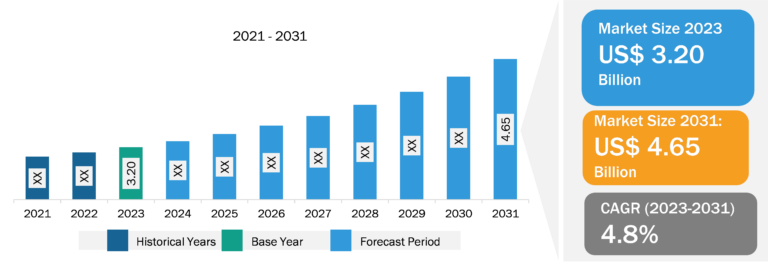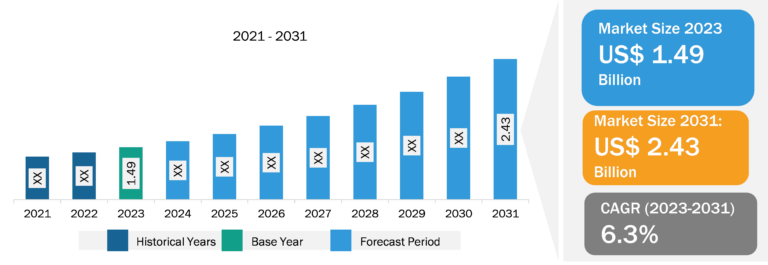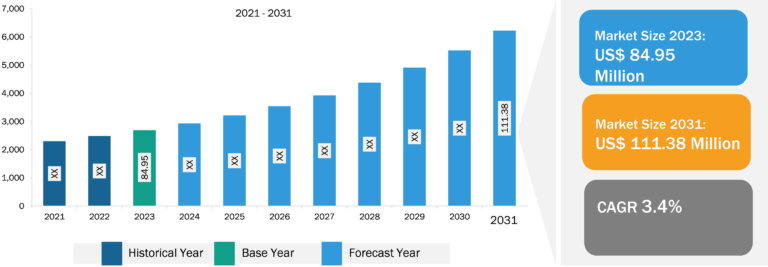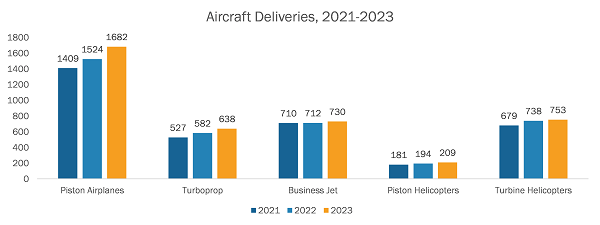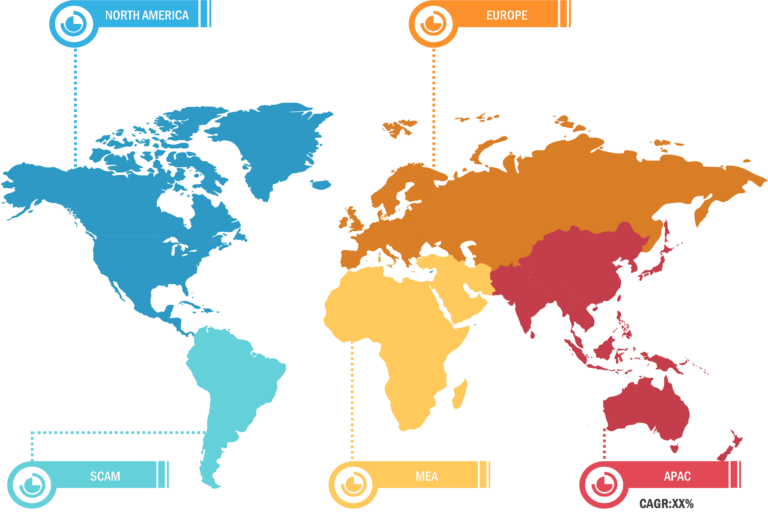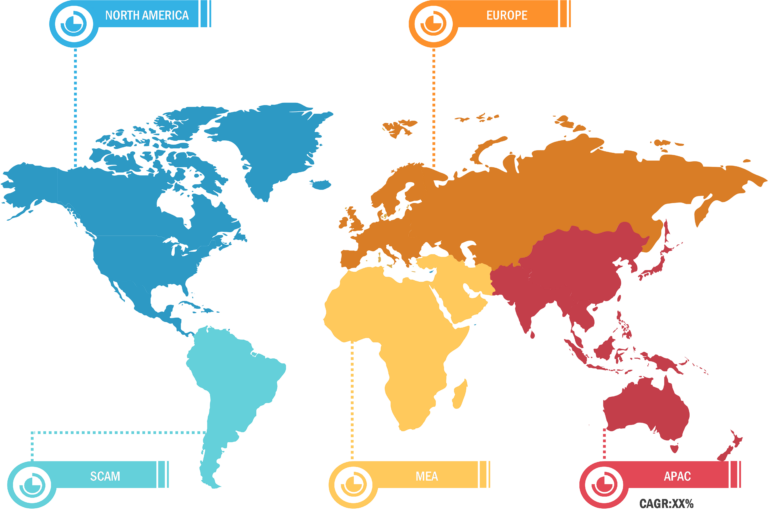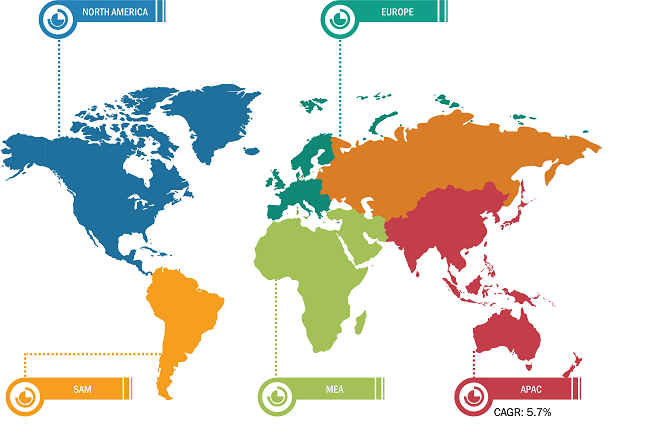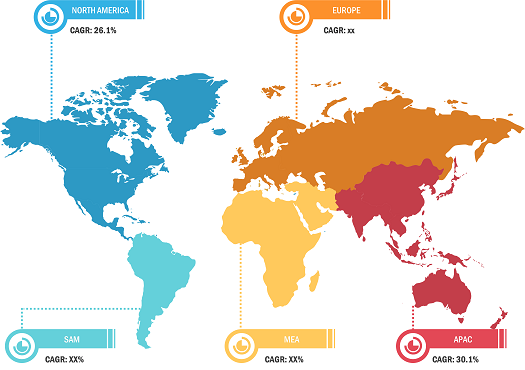
Collaborative Robots Market
The manufacturing industry plays a vital role in the North American economy. The region comprises developed nations, i.e., the US and Canada, as well as Mexico, as a developing country. The manufacturing sector in the US is the second largest in the world, which accounted for ~US$ 2.3 trillion in 2021. In the 1970s, the manufacturing industry was the largest contributor to the country’s economy. However, later the country witnessed a shift towards a service-based economy. This shift was attributed to several factors, including the growth of the banking & finance and healthcare sectors owing to increasing healthcare costs. As a result, the country experienced a loss in the global manufacturing market share. The US manufacturing industry is expected to register rapid growth in the coming years due to several favorable factors, including increased productivity owing to the presence of new technologies, decreasing gas prices, and rising labor costs in emerging markets, as well as better protection available to companies regarding their intellectual property. Moreover, the manufacturing industry in Mexico is witnessing significant growth due to government initiatives for attracting FDIs, as well as its proximity to the US and ability to achieve cost-competitiveness due to NAFTA. Also, the automotive industry in Mexico is experiencing a paradigm shift, with many huge automobile companies constructing their plants in the country. A few companies that opened their plants in the country include Kia Motors, Mercedes-Benz, Nissan, Audi, and General Motors.
The manufacturing industry in North America, specifically the US, is contributing to the country’s economy and workforce, which drives the demand for efficient manufacturing tools. The above factors are anticipated to support the collaborative robots market growth during the forecast period. A few of the major manufacturing industries in North America include aerospace, automotive, and construction.

Widespread Adoption of Industrial Automation in Diverse Industries Opportunities for Collaborative Robots Market
The penetration of industrial automation is gaining pace in various industries other than automotive, such as logistics, food & beverages, electrical & electronics, and rubber & plastics. In recent years, the non-automotive industries have been underpenetrated in comparison to the automotive industry. With the increasing functionality of automated equipment such as collaborative robots, it is anticipated that the non-automotive industries will further accelerate the adoption of collaborative robots in China, the US, and Japan. This growth is also attributed to the rise in modernization and transformation of these industries which fuel the collaborative robots market growth.
Collaborative Robots Market: Segmental Overview
Based on payload, the collaborative robots market is segmented into:
- Up to 5 Kg
- 5–10 Kg
- Above 10 Kg
The above 10 Kg segment held the largest collaborative robots market in 2022, whereas the up to 5 Kg segment is anticipated to register the highest CAGR in the market during the forecast period.
Based on application, the collaborative robots market is segmented into:
- Assembly
- Material Handling
- Pick & Place
- Quality Testing
- Packaging
- Machine Tending
- Welding
- Others
The assembly segment held the largest collaborative robots market share in 2022, whereas the material handling segment is anticipated to register the highest CAGR in the market during the forecast period.
Based on type, the collaborative robots market is classified into:
- Robotic Arm
- Grippers
- Welding Guns
- Others
The robotic arm segment held the largest collaborative robots market share in 2022, with the highest CAGR during the forecast period.
By end-user industry, the market is segmented into:
- Automotive
- Metal & Machinery
- Electronics
- Pharmaceuticals
- Food & Beverages
- Logistics
- Others
The automotive segment held the largest collaborative robots market share in 2022, whereas the electronics segment is anticipated to register the highest CAGR in the market during the forecast period.
Collaborative Robots Market Analysis: Competitive Landscape and Key Developments
Kuka AG, Yaskawa America Inc, Aubo (Beijing) Robotics Technology Co Ltd, Doosan Robotics Inc, Fanuc Corp, ABB Ltd, Rethink Robotics GmbH, Universal Robots AS, Techman Robot Inc, and Kawasaki Heavy Industries Ltd are a few of the key companies operating in the global collaborative robots market. The market leaders in the global collaborative robots market focus on new product launches, expansion and diversification, and acquisition strategies, which allow them to access prevailing business opportunities.
- In January 2022, Ford Otosan in Turkey and KUKA announced the signing of a new framework agreement for the provision of more than 700 robots for Ford’s Kocaeli facilities’ next-generation connected and electrical commercial vehicle projects. The contract marks a continuation of the companies’ partnership, which has been in place for more than 20 years.
- In May 2021, AUBO launched its collaborative robots with explosion-proof capabilities at the Dalian International Industry Fair. They are one of the the lightest and smallest explosion-proof robot available. Flammable and explosive gases, liquids, dust, and fibers can readily seep out during the numerous stages of production, processing, transportation, and storage in the petrochemical industry. These compounds can result in major incidents such as explosions whenever there is a fire after they are mixed with air and reach the explosive concentration range.

